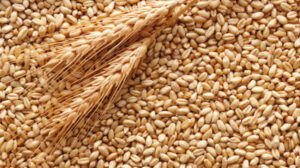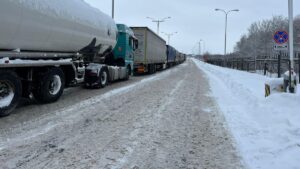
The trade flow of agricultural products through road and railway checkpoints in Volyn increased 19 times in 2022, and the number of food products (1-24 groups of UKTZED) cleared by customs posts in the “export” mode increased 10 times, the press service of the Volyn Customs reported.
“Volyn Customs coped with a significant increase in workload due to promptly taken measures to optimize the time of customs procedures, redistribution of personnel, joint projects with border guards and the Polish side of the pilot projects of vehicle passage,” the report quotes the head of Volyn Customs Yuriy Ivaskiv as saying at a field meeting of the Verkhovna Rada Committee on Agrarian and Land Policy.
Commenting on the work of Polish veterinary services on the Ukrainian-Polish border, Ivaskiv said that the Ukrainian side had repeatedly raised this issue at international meetings. However, the Polish side has stated that it is impossible to speed up these types of state control due to contradictions with the legislation of the European Union.
“Certain types of control (in particular, veterinary control – IF-U) can only be carried out at the border,” Ivaskiv reminded.
He noted that in August of this year, on average, 625 trucks were accepted at the Dorohusk checkpoint from Yahodyn per day, of which only 43 were carrying food products. Given the fact that all grain goods, including technical grain, are sent by the customs authorities for veterinary control, and product samples are examined within 2-3 days, trucks with this category of goods are waiting to cross Yahodyn in a separate electronic queue, he explained.
Ivaskiv reminded Volyn agricultural producers of the new requirements of the Customs Code, which will come into force on November 7, 2023. He recommended that everyone should not hesitate to apply for customs simplification in the NCTS or the status of an authorized economic operator (AEO).
“This will allow agricultural businesses to export products to the European market without having to present the goods to customs,” summarized the head of the Volyn Customs.

Because of the snowfall that began on Thursday, the movement of transport to the state border checkpoints in several regions has slowed down, the press service of the State Border Guard Service of Ukraine reported.
“The longest queues were formed on the border with Poland at the entrance to the checkpoints “Shehyni”, “Krakivets”, “Rava-Russkaya” in Lviv region, as well as before the checkpoints “Yagodin” and “Ustilug” in Volyn,” – said in the message.
It specifies that at the same time checkpoints in Transcarpathian and Chernivtsi regions are not overloaded.
“Take this information into account when crossing (the border – IF-U). In the meantime, border guards together with employees of the National Police, if necessary, carry out reverse traffic to pass cars and try to clear passengers and vehicles as quickly as possible”, – summarized in the State Border Guard Service.

The epidemic situation in Volyn, Zhytomyr, Ivano-Frankivsk, Lviv, Odesa, Rivne, Sumy, Kharkiv and Chernivtsi regions does not meet the criteria for easing lockdown, the Health Ministry said on its website on Tuesday.
The occupancy of beds, in particular, exceeds the permissible indicator of 53.31% in Lviv region. However, in Odesa and Sumy regions, the dynamics of the spread of the disease exceeds the established value of 10%.
The percentage of disease detection is higher than the established value of 11% in Volyn, Zhytomyr, Ivano-Frankivsk, Rivne, Kharkiv and Chernivtsi regions.
As reported, the Cabinet of Ministers of Ukraine introduced adaptive lockdown until August 31, 2020, changed the principle of the distribution of regions to strengthen lockdown measures.
Depending on the epidemic situation in the region or individual administrative territorial units-districts, a “green,” “yellow,” “orange” or “red” level of epidemic danger of the spread of coronavirus (COVID-19) disease is established.
CHERNIVTSI, EPIDEMIC SITUATION, IVANO-FRANKIVSK, KHARKIV, LVIV, ODESA, RIVNE, SUMY, VOLYN, ZHYTOMYR